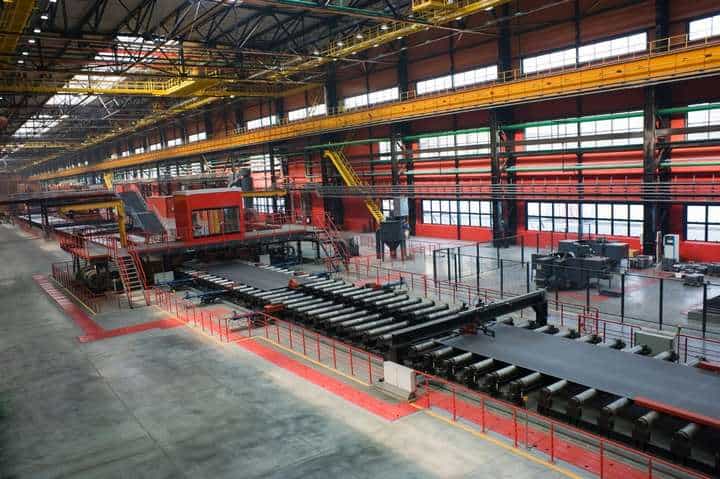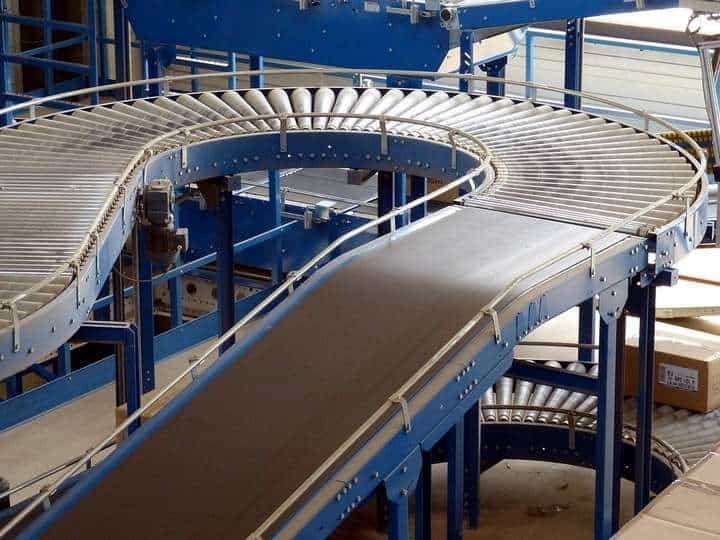Conveyor belts are used in different manufacturing industries, and they are becoming an essential system in transporting goods. If you ever need one, you should contact a legitimate supplier to provide you with the specific length and material you need. Some of them will offer consultations, and they will do a suitable design for your operations.

If you want to find out more about conveyor belts, know that there are many articles on the internet about them. It is recommended to try these guys if you want your questions answered and if they can provide you with specific items that will make your business become more successful. In the meantime, here are some things that you need to know about a conveyor belt.
What is a Conveyor Belt?
Conveyor belts are systems that carry products. They serve as a medium in several manufacturing companies today. Each conveyor may require different functions, and their tasks can differ following the system where they are attached.
Some of the tasks can depend on the speed, weight, and throughput of the products that go through the belt. The belt usually consists of three or more drums or pulleys. They appear to be in an endless medium or loop, which is called the conveyor.
This system’s job is to create a pulling effect for the goods to go through to the desired cleaning, canning, or boxing processes. The one end of the pulley is powered to move the goods in a forward manner as they pass various systems.
Structures to Know About

The belts consist of one or more material layers or structures for more durability. Most of the time, companies use three layers for operations. They are the bottom cover, carcass, and top covers. In other cases, more layers are needed depending on the products that will go through the system.
A carcass is used to provide shape and strength to the conveyor belt. It is mainly made from metal fabric, woven to have a weft and warp. The warp is the longitudinally-shaped cords and defines the belt’s running properties. It is responsible for the elasticity and resistance levels of the belt.
The weft is the transversal cables that allow the materials to be resistant to tears, cuts, and breaks. You can read more about a weft when you click here. They are highly flexible, and they are durable as well.
Most of the carcass materials are made from cotton, polyester, steel, aramid, and cotton. The top covers are made with plastic or rubber compounds, and they are specifically made according to the conveyor system’s uses.
If the entire system is carrying heavier products, the belt’s structure should increase its durability and strength. Steel is often used for heavier kinds of operations, and the cords are made from very sturdy materials.
Lower strength may consist of cotton, polyester, and nylon. They are usually installed to reduce the energy and amount of transport in the operations. This will prolong their life spans and enhance productivity inside the manufacturing areas.
About the Drive Arrangement
One of the essential parts that owners should have is the Drive Arrangement. This is the part where the Drive Motors and Gear Boxes are included. It’s also associated with couplings of accessories to ensure a smoother run during operations.
On top of the Drive Arrangement, several parts are needed to make the functions more efficient. The scrapes are used to clean the chutes and ensure that the direction of their discharges is correct.
The Skirts have connections with the receivers, while the Take-Up assemblies are used for tensioning. Others you may want to know about are pulley frames, drive frames, short post, stringer, and other technological structures that will ensure that you are operating at maximum capacity.
About the Blue Conveyor Belts

In the food industry, it is common to see blue conveyor systems that transfer milk, cookies, and other food products in massive amounts. The blue material means that they are wash-downable, and workers can clean them afterward. This helps the company comply with hygiene laws regarding food manufacturing.
The blue variety is trendy because the soil’s impurities can be easily identified during the manufacturing process. The blue ones usually have a solid homogenous surface that contains reinforced fibers.
When the manufacturers use non-homogenous belts, the fabric and cords can get damaged over time with continued use. The reinforcements may be exposed to fluids from the products, and they can be breeding grounds for various bacteria and viruses. The result is that the contamination may often be difficult to detect because of the fabric’s non-homogenous nature, and the fabric is also impossible to clean.
The ones made from different layers of plastic or fabric can come apart. They can be exposed to many layers that have come apart and resulting in sanitation issues. Using the belt made up only of a single material eliminates most of these issues and risks. The food-grade ones are usually blue, but it should be kept in mind that not all of them are homogenous. Read more about homogeneity here: https://www.britannica.com/science/homogeneity.
Two Types of Systems
If you are in an industry that needs conveyor belts for your daily needs and operations, know that there are two classes to choose from. The general materials handling is suitable for moving products and items within the building. They are smaller in size, and they can carry things with lighter weights, including boxes and milk cartons.
Bulk materials are systems that handle sharp, heavy, and dry materials. Some of them may be used in transporting raw goods like plants, coal, sand, sugar, flour, grains, chemicals, stones, gems, minerals, and more. They are used in industries like ceramics, animal food, painted goods, food, drinks, and agriculture.
It would be best if you had a team that will give you a specific belt that is suitable for your needs. The fabric should adhere to your industry’s standards, and you should be able to operate smoothly after installation.

